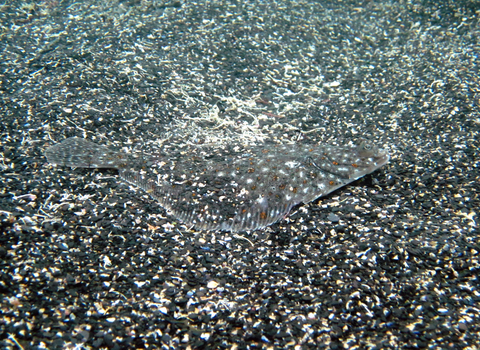
Plaice ©Julie Hatcher
Plaice
Plaice is a common sight all around our coasts - if you can spot it! They are extremely well camouflaged against the seabed and can even change colour to better match their surroundings.
Scientific name
Pleuronectes platessaWhen to see
January to DecemberTop facts
Stats
Length: normally up to 50cmClassified as a Priority Species under the UK Post-2010 Biodiversity Framework and is listed as of Least Concern on the IUCN Red List.
